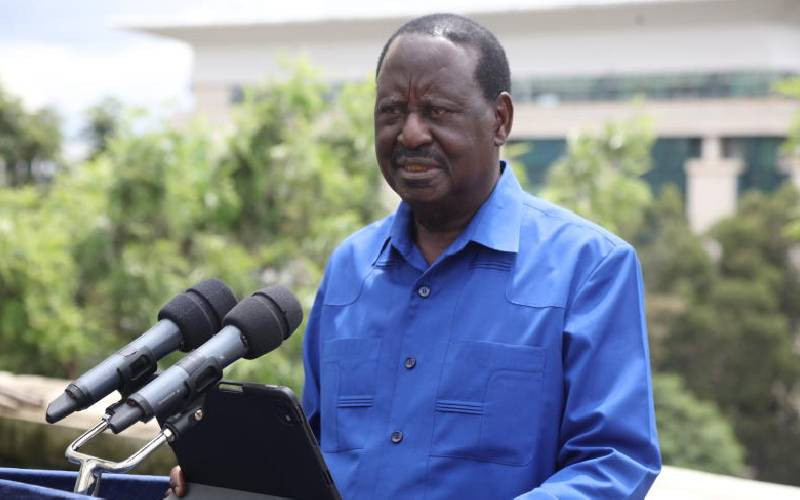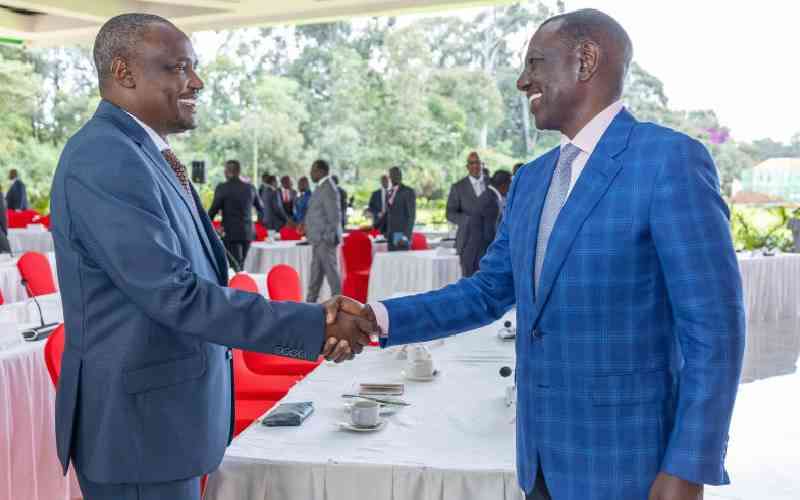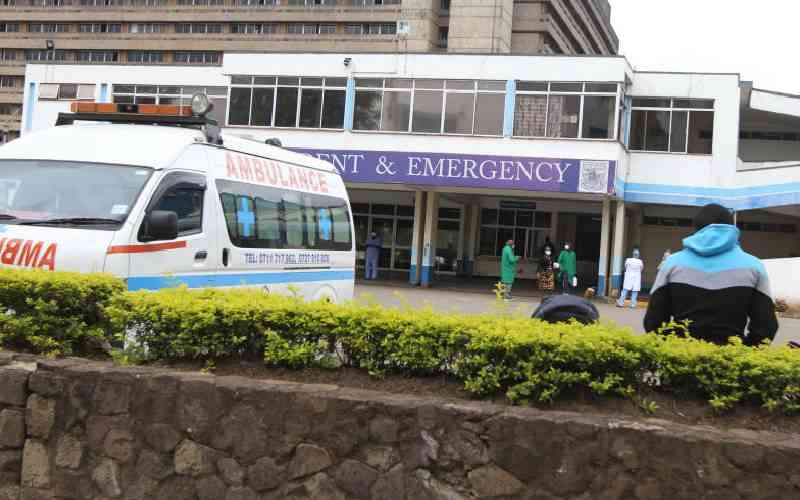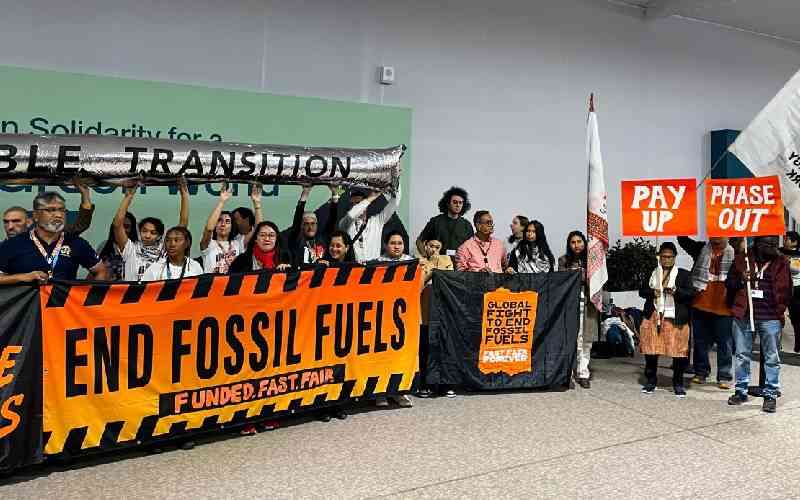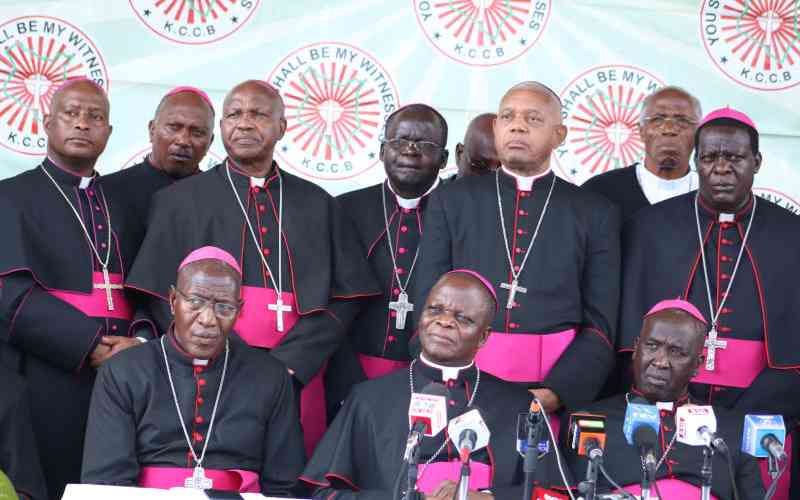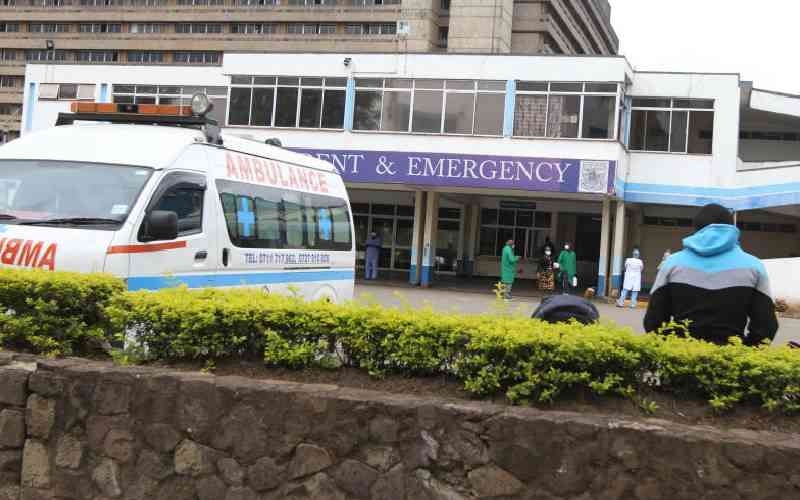
Angelos Miano Muthee was involved in an accident where he sustained severe head injury on February 19, 2018, at noon. He was rushed to Kenyatta National Hospital (KNH) as an emergency case with his family hoping that doctors would save his life.
However, this did not happen. What transpired at the level five hospital marked a slow but painful death while doctors and nurses watched. A plea by his family to have him transferred to another institution that could take care of him was rejected.
The court heard that a CT scan was recommended when he arrived at the hospital. Had it been performed in time, doctors would have discovered that the deceased suffered from a right temporal contusion, hemorrhage, left temporoparietal injury, and a non-depressed skull fracture that required him to be admitted to the intensive care unit (ICU).
A contusion is a bruise on the brain that can involve bleeding, while a hemorrhage is the escape of blood from a ruptured blood vessel. The temporoparietal region is critical for processing and integrating information from multiple senses, including vision, hearing, and touch. The left temporoparietal region also processes thoughts and converts them into spoken or written language.
A non-depressed skull fracture occurs when the skull buckles inward without breaking the bone.
Mano’s father, James Muthee, told the court that the hospital failed to perform the scan in time. He also testified that, after the delay, Miano had to wait for admission. Miano was finally admitted the following day, February, 20, 2018, at 1 pm.
Despite being admitted, his health condition did not improve. Doctors then recommended a second CT scan. Although his life was hanging in the balance and entirely dependent on the medical team, the results of the scan were only available three days later.
- How KMPDC handles cases of malpractice and negligence
- Relinquish Margaret Kenyatta Hospital to KNH, Kariobangi residents urge county
- Lions Club enhances paediatric cancer care at KNH
- Integrate quality improvement in medical training
Keep Reading
Doctors advised that he required critical surgery and requested that the next of kin sign a consent form.
Unfortunately, the bad news soon followed: he had suffered brainstem death, meaning he had no brain function and had permanently lost the potential for consciousness and the ability to breathe.
He could only be sustained by a life-support machine to keep his heart beating.
His father lamented that the medical team knew that brainstem death is irreversible, yet they proceeded to place him on the life-support machine. He was declared dead on February 28, 2018.
Muthee also raised an issue of misdiagnosis. He relied on Dr Dorothy Njeru’s report on the cause of death, which indicated injuries that the doctors had failed to identify at the time. This included a subglial haematoma (a fatal collection of blood between the skull and scalp), a fracture at the base of the skull, and a left-sided epidural hematoma (a collection of blood between the skull and the brain), which is life-threatening.
The Pan African Medical Journal indicates that symptoms of such injuries can include loss of consciousness, as well as marked global subdural and subarachnoid hemorrhage (blood leakage from a ruptured vessel into the space below the brain).
In his case, before the magistrate’s court and later in the High Court, Muthee accused the hospital of failing to provide the deceased with the best care.
He stated that, as an institution specialising in providing medical services to the public, the hospital had a duty to exercise the highest standards of care.
Muthee also accused the hospital staff of laxity and of failing to provide emergency care promptly. His other argument was that the doctors were negligent, causing the deceased unnecessary pain and suffering.
The Constitution guarantees every Kenyan the right to the highest standard of medical care. Article 43(2) states that no Kenyan shall be denied emergency medical care.
Emergency care and disaster management are shared responsibilities between national and county governments.
Counties are responsible for providing evacuation services, such as ambulances and emergency care in hospitals, while the Ministry of Health regulates emergency healthcare in national hospitals.
Kenya has two policies addressing emergency care: the Kenya Emergency Medical Care Policy 2020-2030 and the Kenya Emergency Medical Care Strategy 2020-2025. Both policies identify ambulances as a primary care service, which should be available in level two hospitals or dispensaries.
Referral services are meant to be provided by the nearest health facility.
The highest level of the system — level six — is the national referral hospitals, where KNH is placed. These hospitals are required to have teams dedicated exclusively to emergencies.
In its response, KNH argued that there was no evidence to show that its staff sluggishness in handling Miano and the misdiagnosis contributed to his death. The hospital also argued that the case was time-barred, as it was filed more than a year after the deceased’s passing.
The hospital called Dr John Bore as its witness. He testified that from the moment Miano arrived at the hospital, doctors did everything they could to keep him alive.
According to Dr Bore, Miano was brought to the hospital on February 19, 2018, at 12 pm, admitted to the emergency unit, had a CT scan performed.
He was seen by a maxillofacial and ear, nose, and throat specialist. The ICU team reviewed him at 9.15 pm.
On February 20, he was reviewed by a neurosurgeon and critical care team in the morning.
On February 23, a repeat CT scan was done, and consent for surgery was sought. The next day, pre-operative preparations were made. However, doctors decided not to proceed with the surgery.
Over the following days — February 25, 26, and 27 — the medical team held daily conferences with the family. Miano died on February 28.
Dr Bore explained that at the time, the hospital had insufficient ICU beds — there were 21. He stated that all the beds were occupied, and Miano was placed on the high dependency care list.
He further explained that Miano had been allocated a bed in the theatre on February 24, but was unable to withstand the surgery.
“There was no delay in the management of the patient. There were many other patients pending,” testified Dr Bore.
Justice Ouya Wanyama disagreed with the hospital’s defence. She observed that the family could file the case outside the stipulated time limits.
In her judgment, the hospital and the doctor could not explain what happened between February 21 and 22. She noted that the decision not to operate was only made during Miano’s final three days.
The judge emphasised that every second in Miano’s fight for survival was critical, and the doctors needed to hasten their intervention. She further observed that the hospital only communicated the grim reality when it was too late.
Justice Ouya also noted that, rather than explaining step-by-step how it handled the emergency, the hospital chose to shift the blame to a lack of facilities. The judge noted that KNH did not deny the claim regarding the delays.
Justice Ouya concluded that it was clear the hospital was negligent. She stated that the hospital had been sluggish in handling Miano’s case, and did not give the family the opportunity to transfer him to another hospital despite knowing that there were no available ICU beds.
“The key questions to ask are: When the doctors realised that the patient needed immediate emergency treatment in the ICU, but no beds were available, was the family duly informed? Were they advised and given the opportunity to transfer the patient to another facility where life could have been saved? Why did it take several days to act on the CT scan results, which recommended emergency surgery?”
“Why was the appellant’s request to transfer the patient ignored until it was too late? Indeed, ten days is a long wait for an emergency patient, only for the family to be told that it was too late for surgery,” said Justice Ouya.
The Kenya Institute for Public Policy Research and Analysis (Kippra) reported that, as of 2022, Kenya had 16,517 health facilities.
These included 12,821 level two facilities (dispensaries and private clinics), 2,712 level three facilities (health centres), 958 sub-county hospitals (level four), 20 level five hospitals (county referral, teaching and referral, and private hospitals), and level six national referral hospitals.
Kippra revealed that assault is the leading cause of emergency care, comprising 42 per cent of reported cases, followed by road-related injuries (1.9 per centof hospital admissions).
Kippra also noted that accidents and injuries contribute to the longest average length of stay in hospitals, with affected patients spending an average of 22.2 days in hospital.
The Ministry of Health classifies road accidents as burden diseases.
“These statistics imply a need for agility in response and adequate preparedness. Post-accident crash response, including immediate care at the scene, patient transport, and in-hospital care, is a critical part of the emergency medical care system,” the government agency added.
Between 2018 and 2022, there were 115,841 medical emergency cases related to rape, defilement, incest, and sodomy. Data from the National Police Service also indicated that bestiality led to 80 emergency cases, along with other issues such as abduction (268 cases) and assault (78,287 cases).
The Ministry of Health reported that the number of injuries caused by road accidents in 2022 was 1.6 million, with similar numbers in previous years: 243,391 in 2021, 247,252 in 2020, and 480,993 in 2019.
Kippra noted that emerging gaps in emergency medical care include technological limitations, low health insurance coverage, climate-related emergencies, and inadequate ambulance response capacity. It suggested that transitioning from the National Health Insurance Fund to the Social Health Insurance Fund could improve emergency care funding, though it pointed out that only 19.2 per cent of Kenya’s population is covered by active health insurance.
The World Health Organisation recommends one ambulance for every 50,000 people. However, Kippra noted that limited information exists on the number of ambulances and their distribution across the country, making it difficult to estimate ambulance availability.
Returning to Miano’s case, Justice Ouya said the critical period was between February 20, after review by a neurosurgeon and critical care team, and February 24 at 4 pm when the patient’s condition deteriorated.
“There is nothing to show that the respondent (KNH) acted to save the deceased’s life in a timely manner, considering the delicate situation of the patient,” she said.
She further stated that, from the time consent for surgery was given on February 23 until February 24 at 4 pm, there were significant delays and negligence on the part of the medical team.
“The purpose of emergency treatment is to save lives, and when this treatment is sought in a facility of the respondent’s stature, an ordinary, reasonable person expects prompt action and professional advice that both the hospital and the family can act upon to save the patient’s life,” Justice Ouya added.
She concluded that KNH owed Miano a duty of care but failed to fulfil it. Had there been better management of the critical patient, perhaps his life could have been saved, she said.
“The lingering question is whether the patient would have survived had immediate action been taken upon the CT scan done on February 22. There was a significant chance of survival if timely intervention had occurred. Unfortunately, the surgeons reviewed the scan on February 23, but emergency surgery was not performed until February 24 at 4 pm. The respondent owed the appellant a duty of care, which was breached, leading to the death of the deceased,” she said.
She awarded Miano’s family Sh100,000 for pain and suffering, an additional Sh100,000 for loss of expectation of life, and Sh2 million for loss of dependency.
 The Standard Group Plc is a multi-media organization with investments in media platforms spanning newspaper print
operations, television, radio broadcasting, digital and online services. The Standard Group is recognized as a
leading multi-media house in Kenya with a key influence in matters of national and international interest.
The Standard Group Plc is a multi-media organization with investments in media platforms spanning newspaper print
operations, television, radio broadcasting, digital and online services. The Standard Group is recognized as a
leading multi-media house in Kenya with a key influence in matters of national and international interest.


